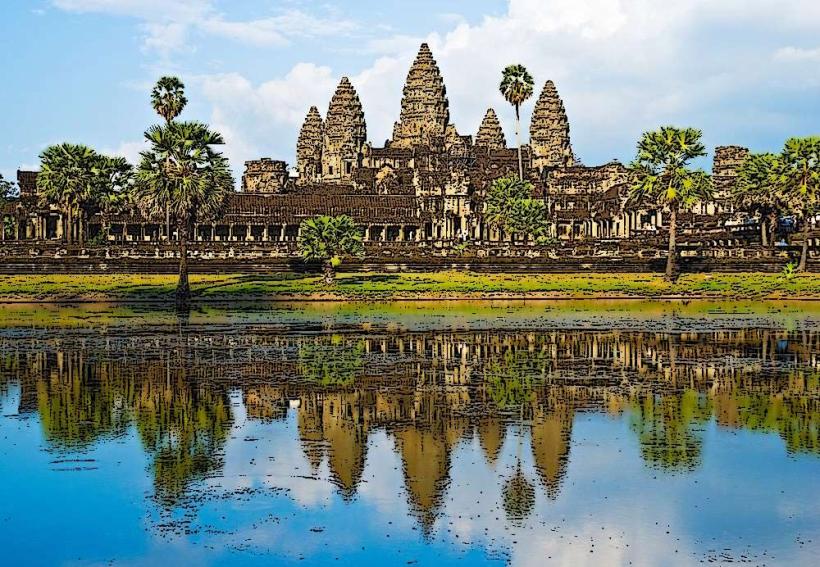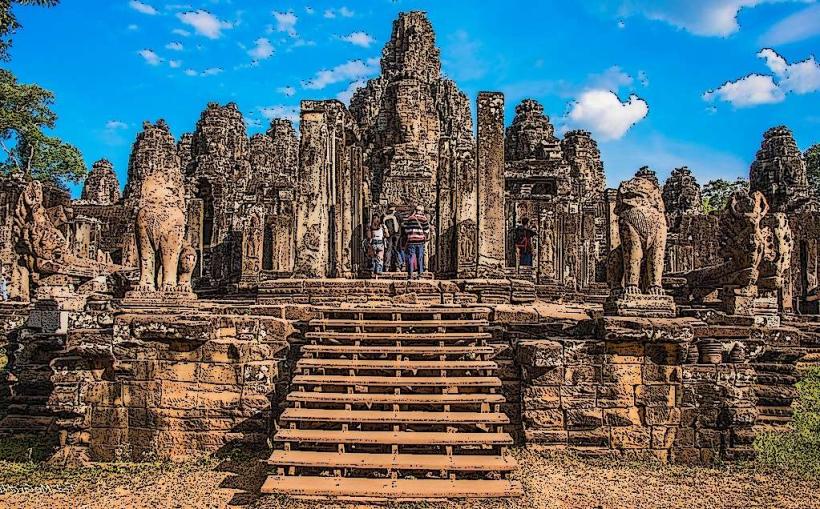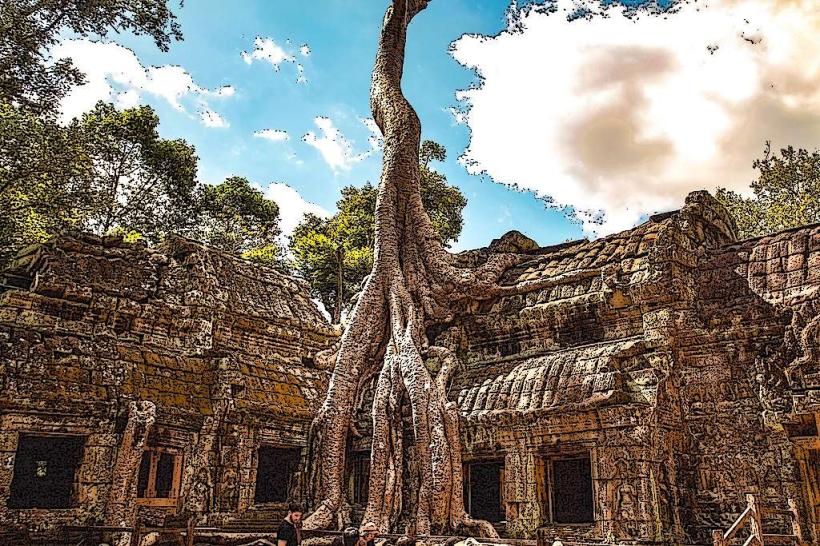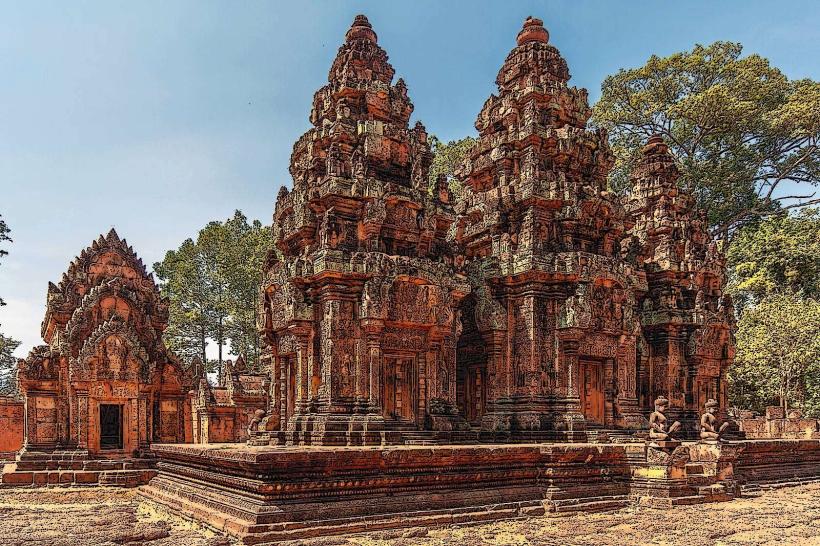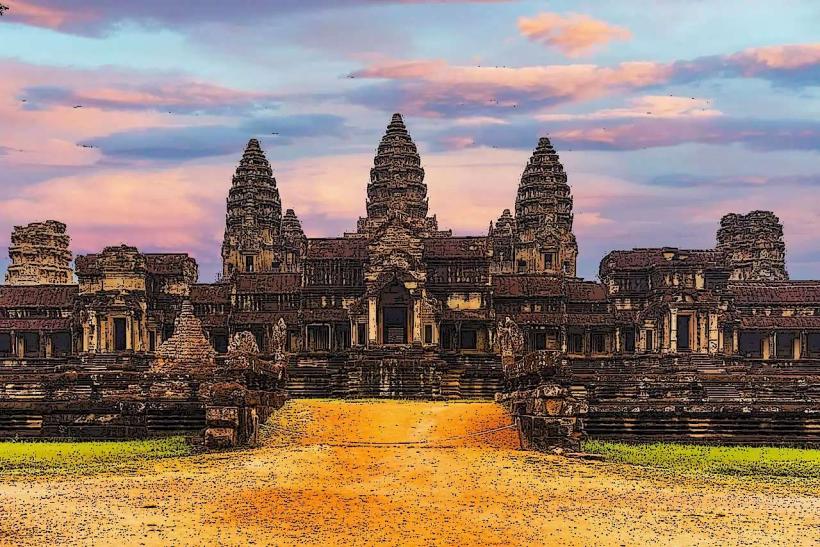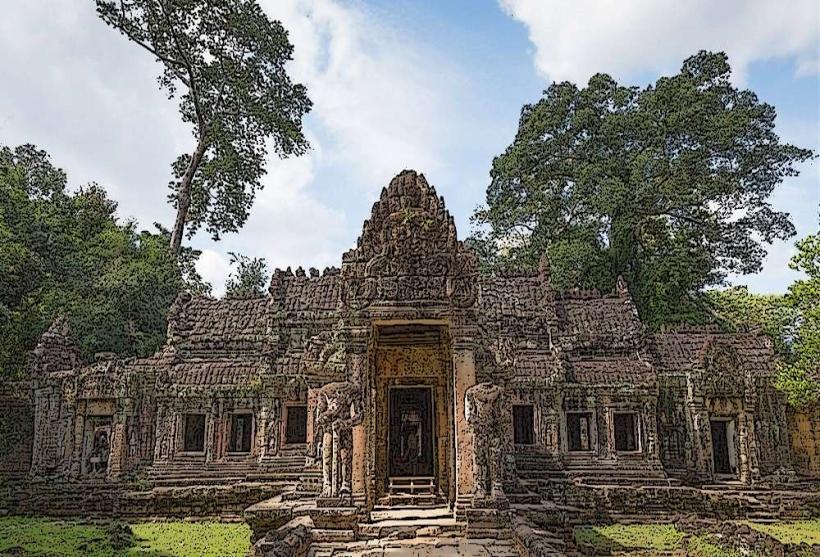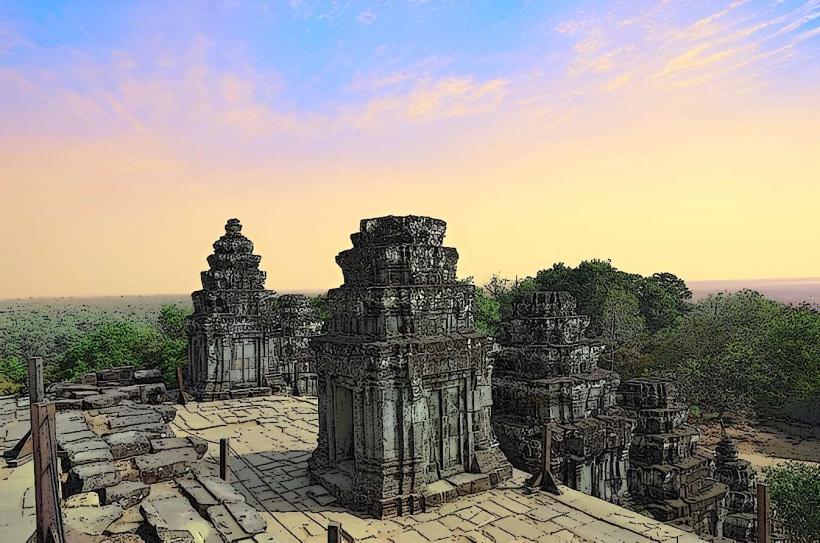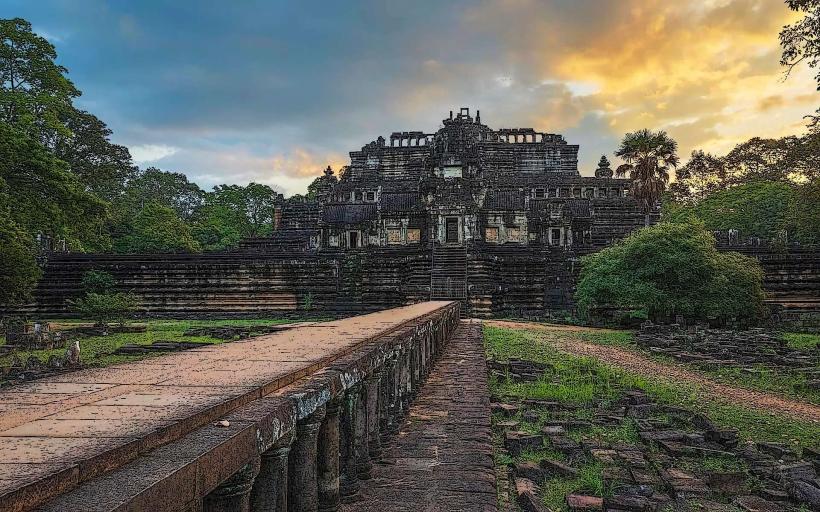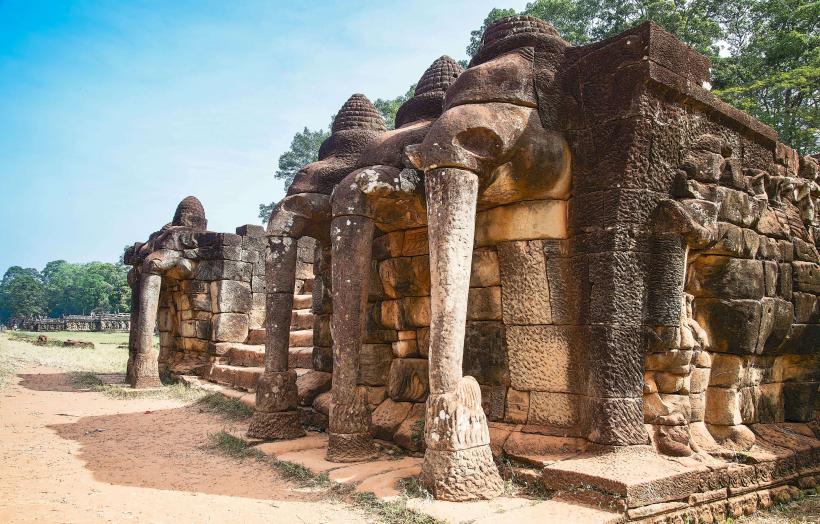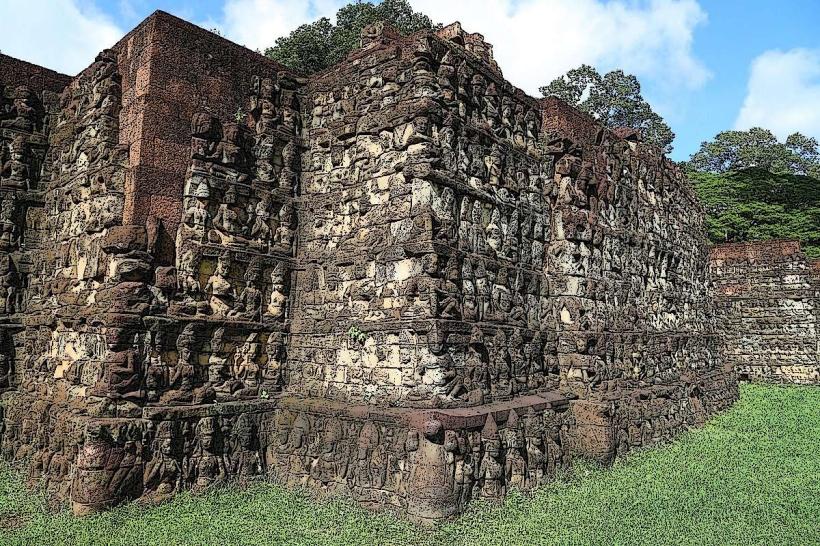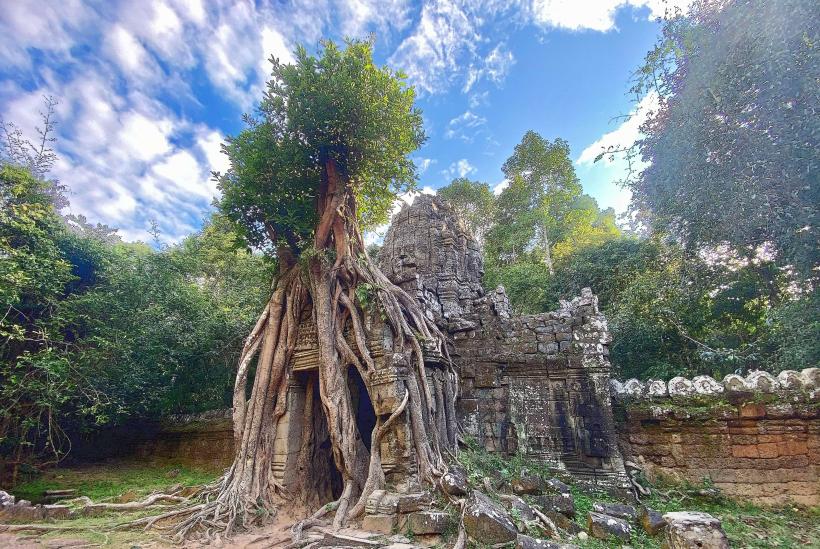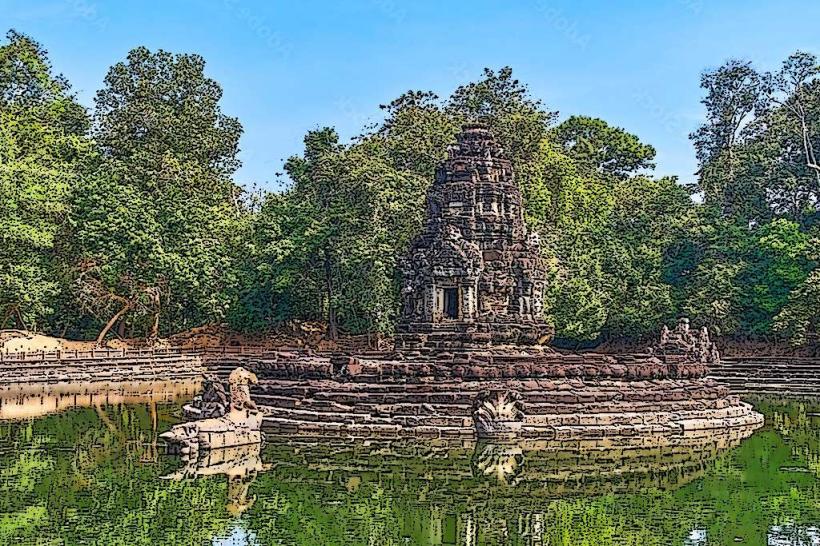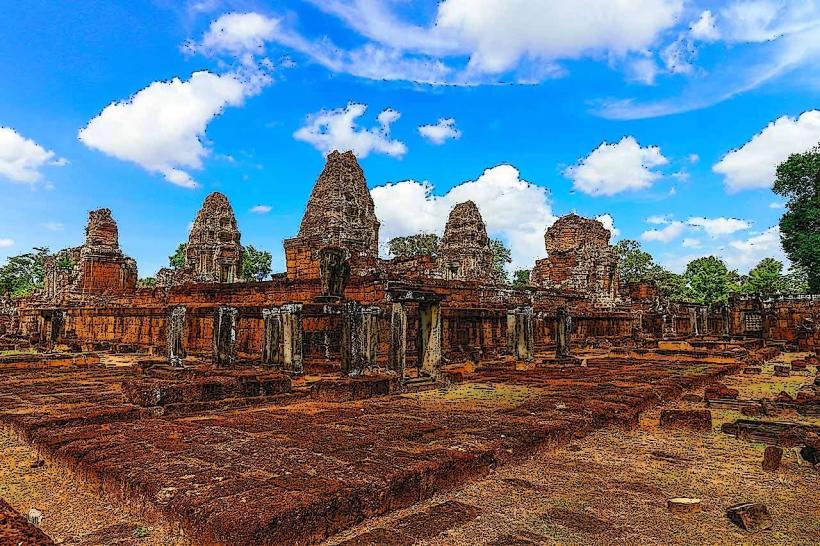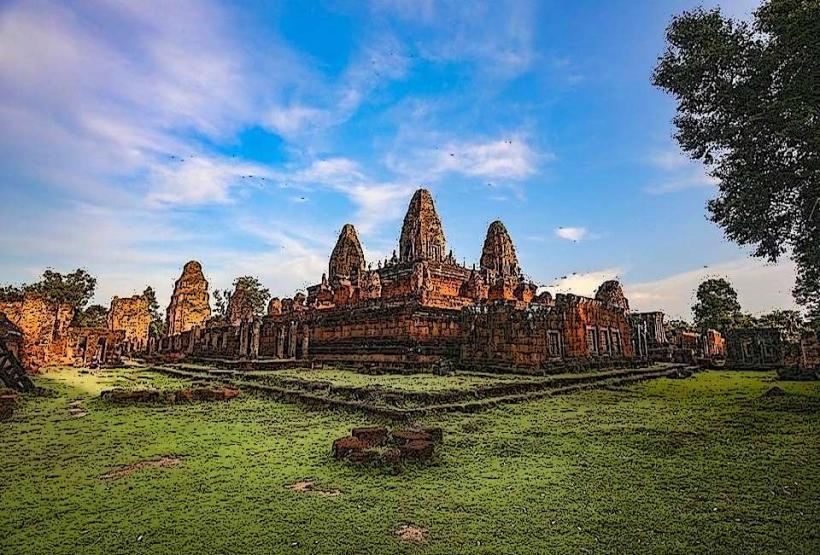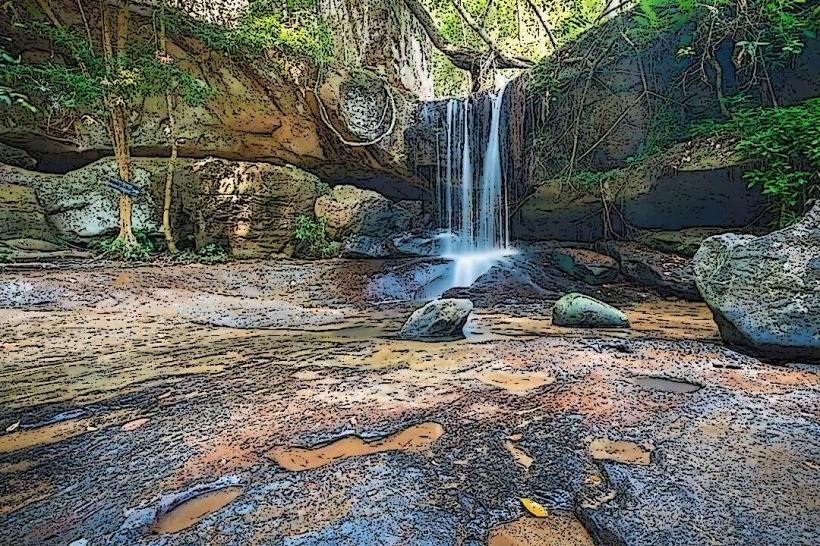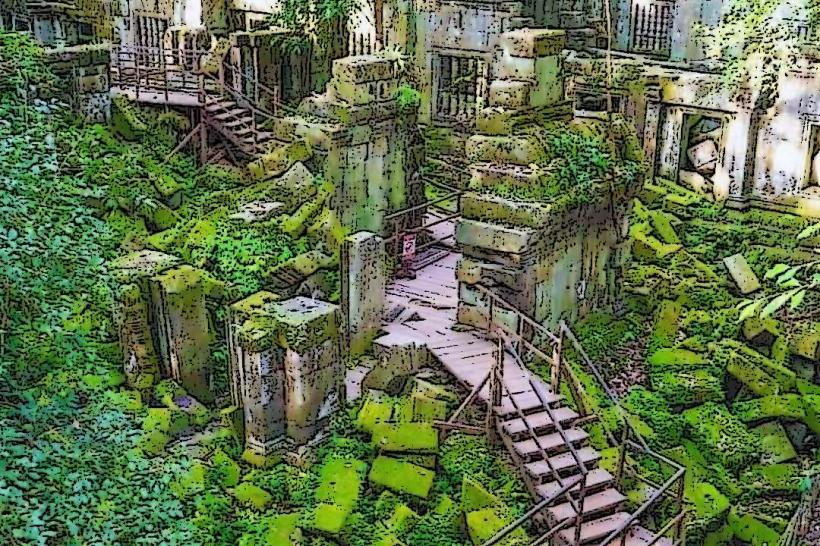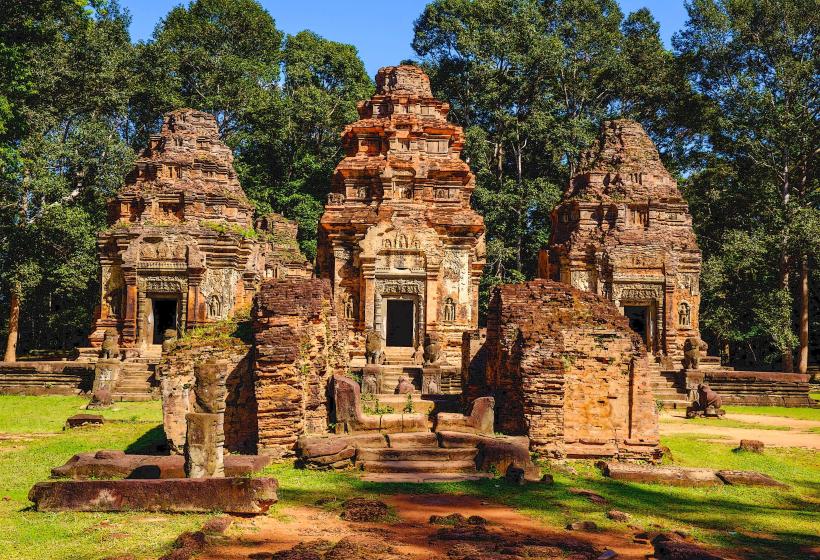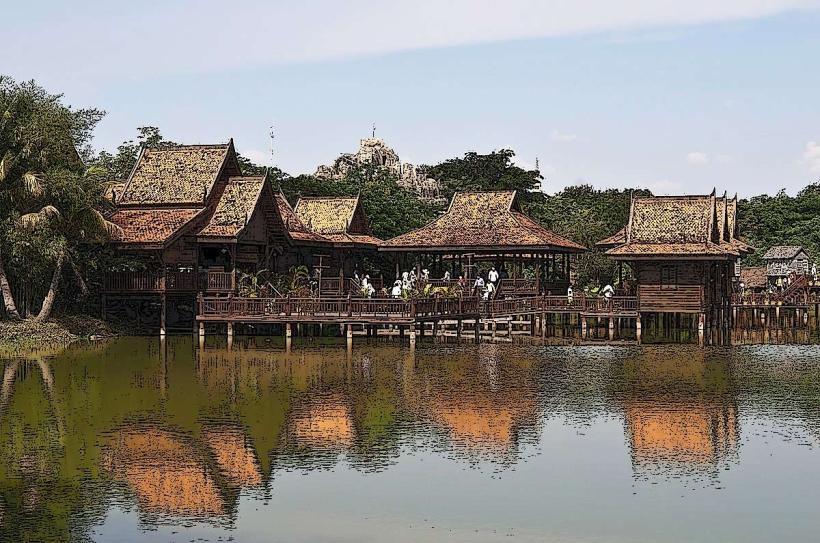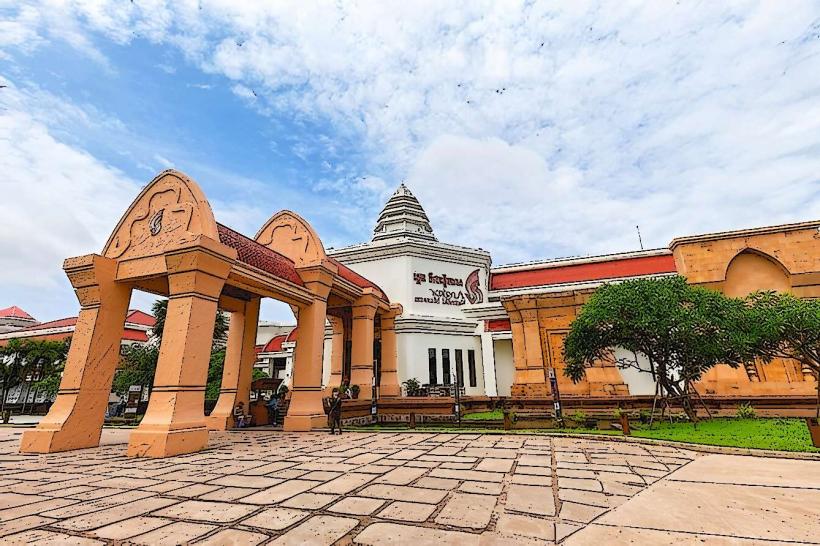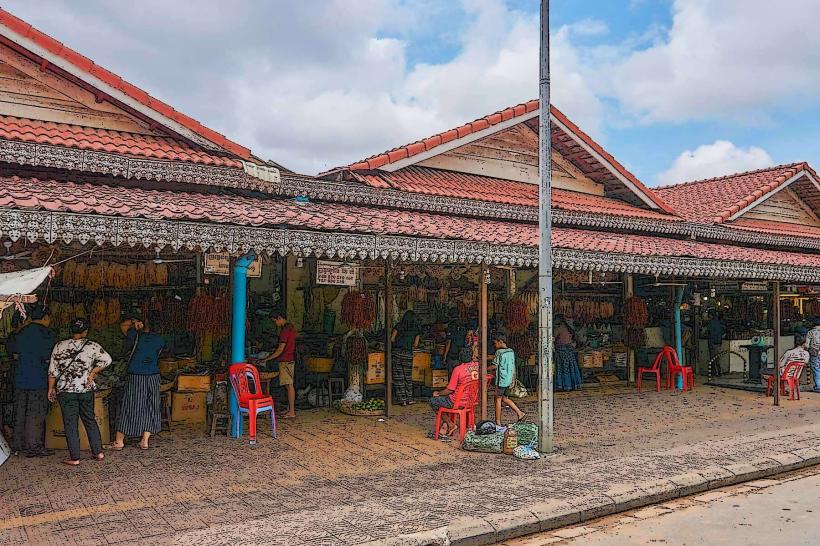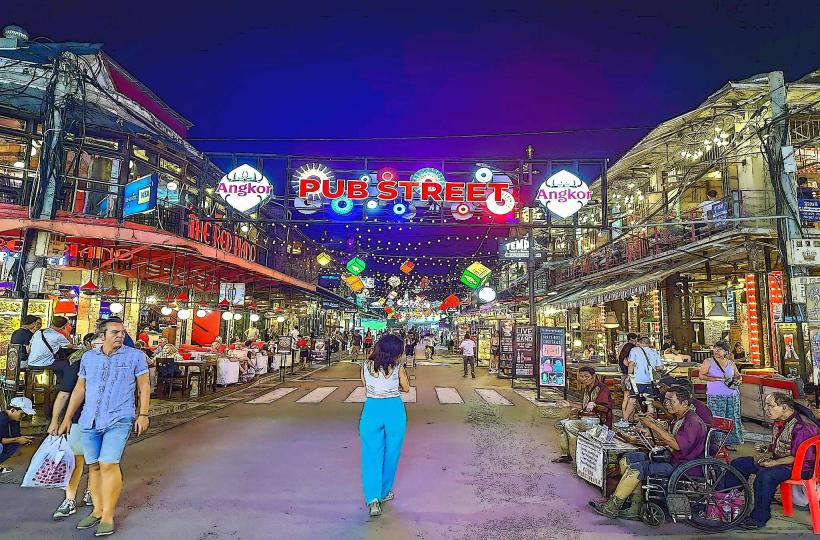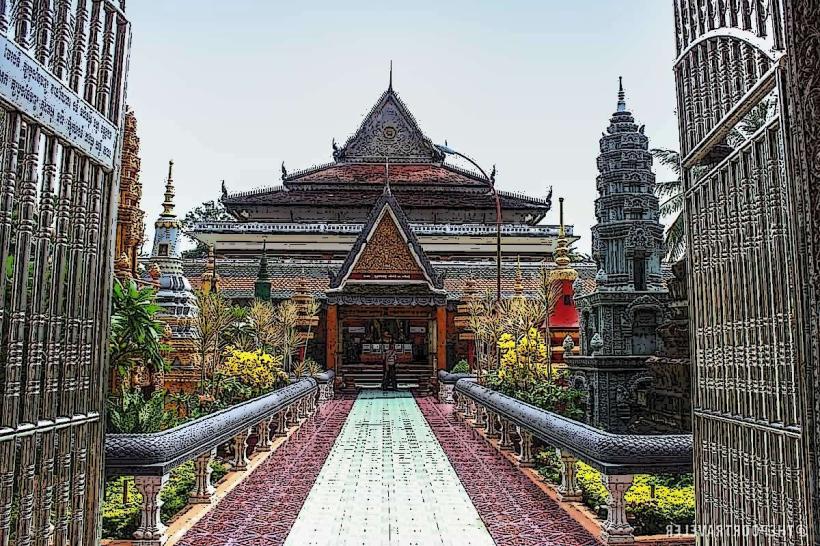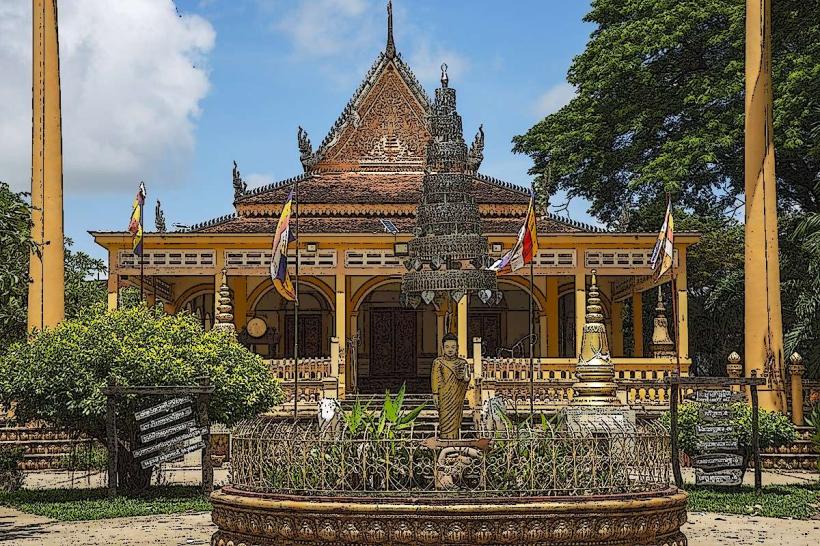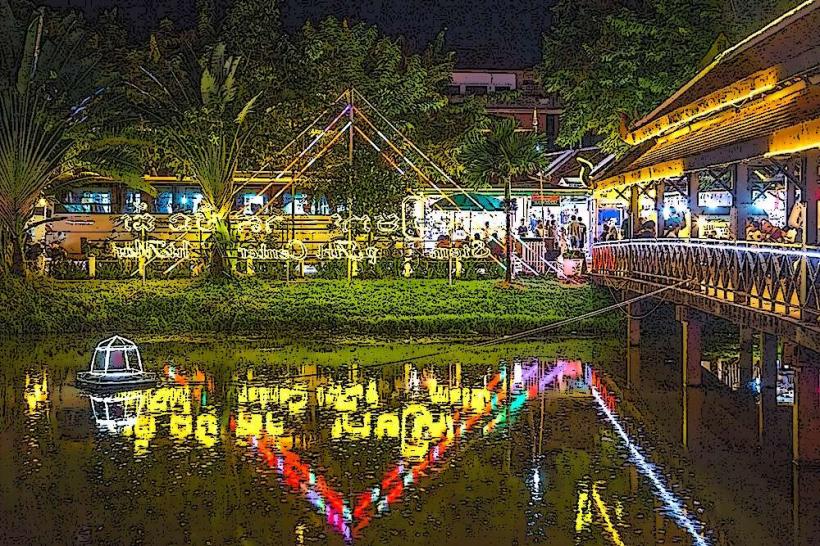Information
Landmark: West Baray ReservoirCity: Siem Reap
Country: Cambodia
Continent: Asia
West Baray Reservoir – An Ancient and Majestic Waterbody
West Baray (also known as Baray West) is a large and historic man-made reservoir located near Angkor, just 6 kilometers northwest of Siem Reap, Cambodia. It is part of the extensive Angkor Water Management System and was constructed during the reign of the Khmer Empire, under King Suryavarman I in the 11th century. This massive reservoir was designed for both irrigation and religious purposes, and it remains one of the most impressive feats of ancient Cambodian engineering.
Overview
- West Baray is one of the largest reservoirs in the Angkor region, covering an area of approximately 2,000 hectares. It is rectangular in shape, measuring about 8 kilometers in length and 2.3 kilometers in width.
- The West Baray was constructed to serve as a water reservoir for the surrounding rice fields, ensuring a steady water supply during the dry season, and it also held significant religious and ceremonial importance. The reservoir is connected to several temples and structures, linking it to the broader Angkor Archaeological Park.
- Today, the reservoir remains an important part of the local agricultural landscape, providing water for irrigation and maintaining a historical connection to the Angkorian period.
Historical Significance
1. Ancient Khmer Engineering
- The construction of West Baray demonstrates the advanced engineering skills of the ancient Khmer Empire. The reservoir was built using earth and stone, creating a large embankment around its perimeter. It has a capacity to hold an enormous amount of water, and its construction required complex planning to manage water distribution, especially during the rainy season.
- Water management systems like the West Baray were crucial for the sustainability of Angkor and its agricultural economy, which relied on rice cultivation. The reservoir helped regulate the water supply to the fields and temples in the area, supporting the thriving city of Angkor and its inhabitants.
2. Religious and Ceremonial Importance
- The West Baray was not only a practical engineering project but also served religious purposes. It was originally used in rituals to honor the Hindu gods and was considered a sacred waterbody in Khmer belief.
- At the center of the West Baray, there is a small island known as Islet of the Sacred (or Preah Pithu), which is home to a small Hindu temple. This island was likely used for religious ceremonies, with the water of the reservoir serving as a symbolic and physical link between the earth and the heavens.
Key Features of West Baray
1. Size and Scale
- West Baray is one of the largest reservoirs in the Angkor area and is far larger than many of the smaller barays and water features within the Angkor Archaeological Park.
- The reservoir’s sheer size is impressive, with a total surface area of around 2,000 hectares. This massive expanse of water was an essential component of the infrastructure that supported the city of Angkor, and it continues to be one of the major remnants of the Khmer Empire's water management system.
2. The Central Islet (Preah Pithu)
- In the middle of the West Baray lies a small island that houses the Preah Pithu Temple, a small Hindu temple. This temple is dedicated to Shiva and Vishnu, and it remains an important archaeological site. Although the temple is in a somewhat ruined state, it serves as a reminder of the religious role the reservoir once played.
- The island is accessible by boat, and visitors can explore the temple ruins and surrounding areas, offering a quiet and peaceful environment away from the more crowded temples of Angkor Wat.
3. Surrounding Landscape
- The West Baray is framed by picturesque surroundings, with the reservoir providing a scenic view of lush greenery, rice paddies, and isolated temple structures.
- The surrounding area is relatively tranquil compared to the more crowded temples in the Angkor complex, offering visitors a peaceful retreat. The view of the reservoir and its expansive surface, especially during the sunset, creates a breathtaking scene.
Visiting West Baray
1. Exploring the Reservoir
- The reservoir is easily accessible from Siem Reap, and visitors can rent a bicycle, tuk-tuk, or private transport to visit the area. It is a popular destination for those looking for a more peaceful, off-the-beaten-path experience compared to the main temples of Angkor Wat.
- Boat tours are available to explore the island at the center of the reservoir and the Preah Pithu Temple. These boat rides provide unique views of the surrounding landscape and offer a closer look at the island’s temple.
- The area around the reservoir is great for leisurely walks or bike rides. Visitors can enjoy the beauty of the water and the historical significance of the surroundings without the crowds typical of more famous Angkorian sites.
2. Photography and Scenic Views
- West Baray is an excellent spot for photography, with wide-open spaces, reflective water, and dramatic views of the surrounding countryside. Sunset and sunrise are particularly spectacular times to capture the beauty of the reservoir and the Preah Pithu Temple.
- The surrounding landscape offers opportunities for capturing nature, traditional farming life, and the reflection of the temples and water.
3. Seasonal Changes
- During the rainy season (from May to October), the water levels in the West Baray can rise significantly, creating an even more impressive and majestic view. The area surrounding the reservoir becomes lush and green, making it a beautiful time for nature lovers and photographers.
- In the dry season (November to April), the water levels may drop, revealing more of the surrounding embankments and giving visitors a different perspective of the reservoir’s structure and historical significance.
Conclusion
The West Baray is a stunning example of ancient Khmer engineering and a testament to the advanced water management systems of the Khmer Empire. Today, it serves as a peaceful and picturesque destination near the Angkor Archaeological Park. With its island temple, tranquil waters, and historical significance, West Baray offers a unique experience for visitors looking to explore a lesser-known but equally fascinating aspect of Cambodia’s rich cultural heritage. Whether you’re interested in history, nature, or simply seeking a serene retreat, West Baray is a destination that should not be missed.

